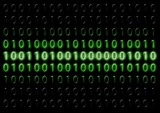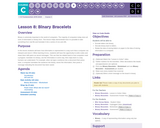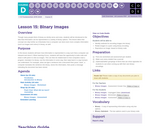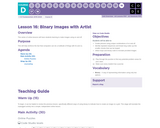
- Subject:
- Computer Science
- Material Type:
- Lesson Plan
- Author:
- Duncan deBruin
- Date Added:
- 07/11/2019


Binary is extremely important in the world of computers. The majority of computers today store all sorts of information in binary form. This lesson helps demonstrate how it is possible to take something from real life and translate it into a series of ons and offs.

Though many people think of binary as strictly zeros and ones, students will be introduced to the idea that information can be represented in a variety of binary options. This lesson takes that concept one step further as it illustrates how a computer can store even more complex information (such as images and colors) in binary, as well.

This series of online lessons will have students learning to make images using on and off.

Interactive video will present number base systems.

n this lesson students work in groups using classroom supplies and everyday objects to develop their own systems for encoding and sending simple binary messages, messages that only have two possible values. Students will think about what can be usefully conveyed in such a simple message and build a “device” to communicate the message over some physical distance. Then students are asked to consider how to use their binary messaging devices to send a more complex message - a message with more than two possibilities, say four, or eight, or even thousands of different messages. Students will collaborate in an iterative design process in the “maker ethos” of rapidly building and improving their “device” for sending messages.